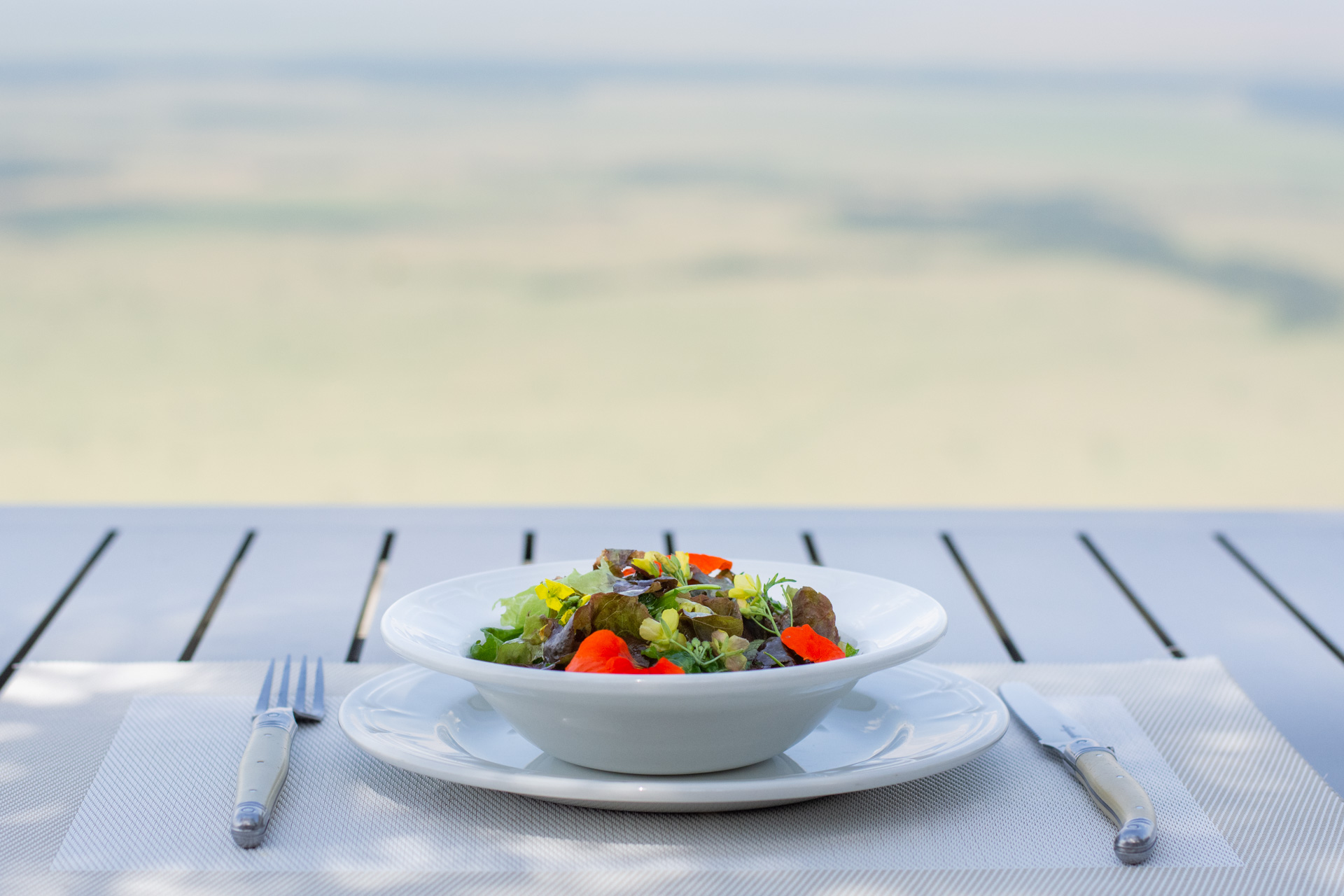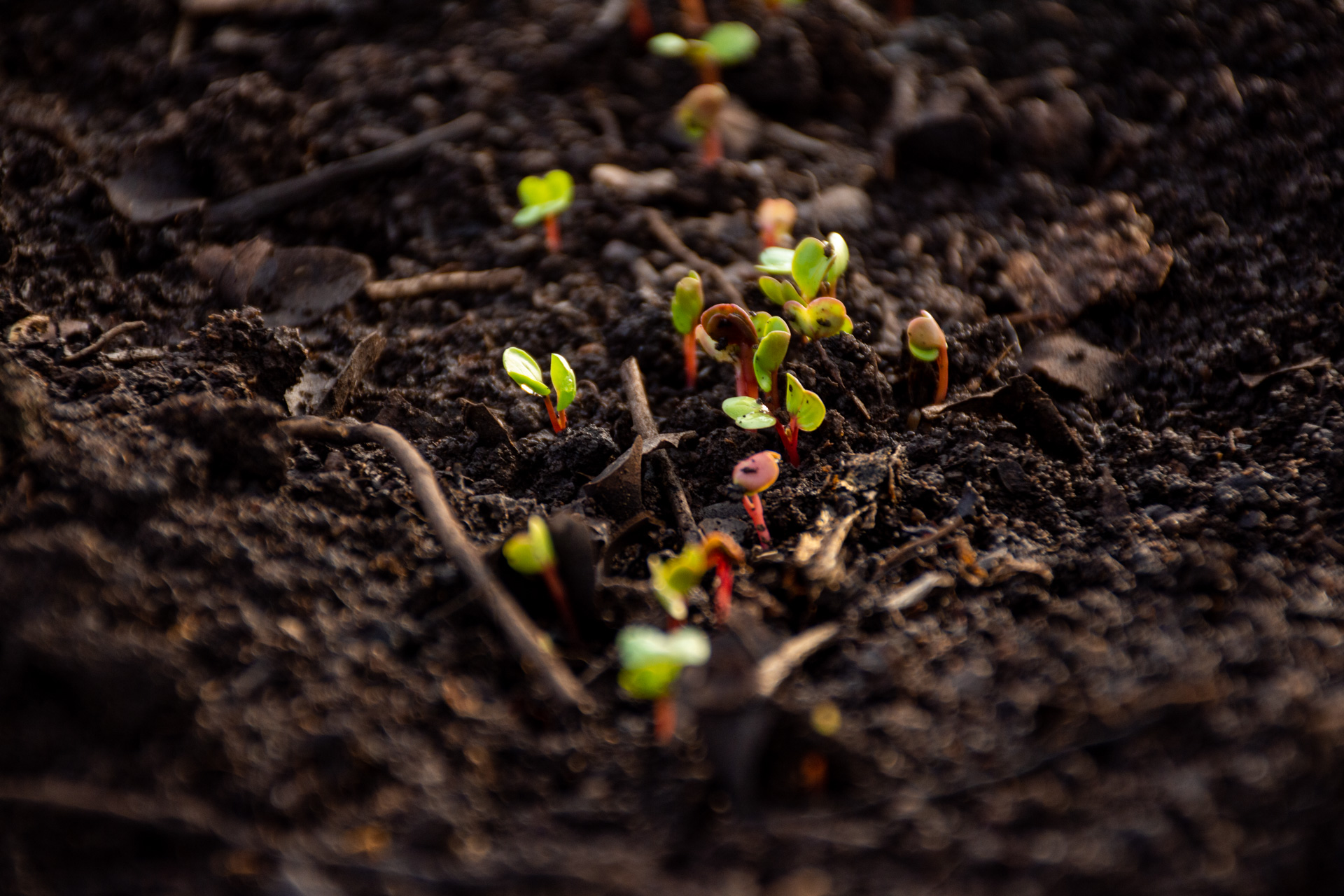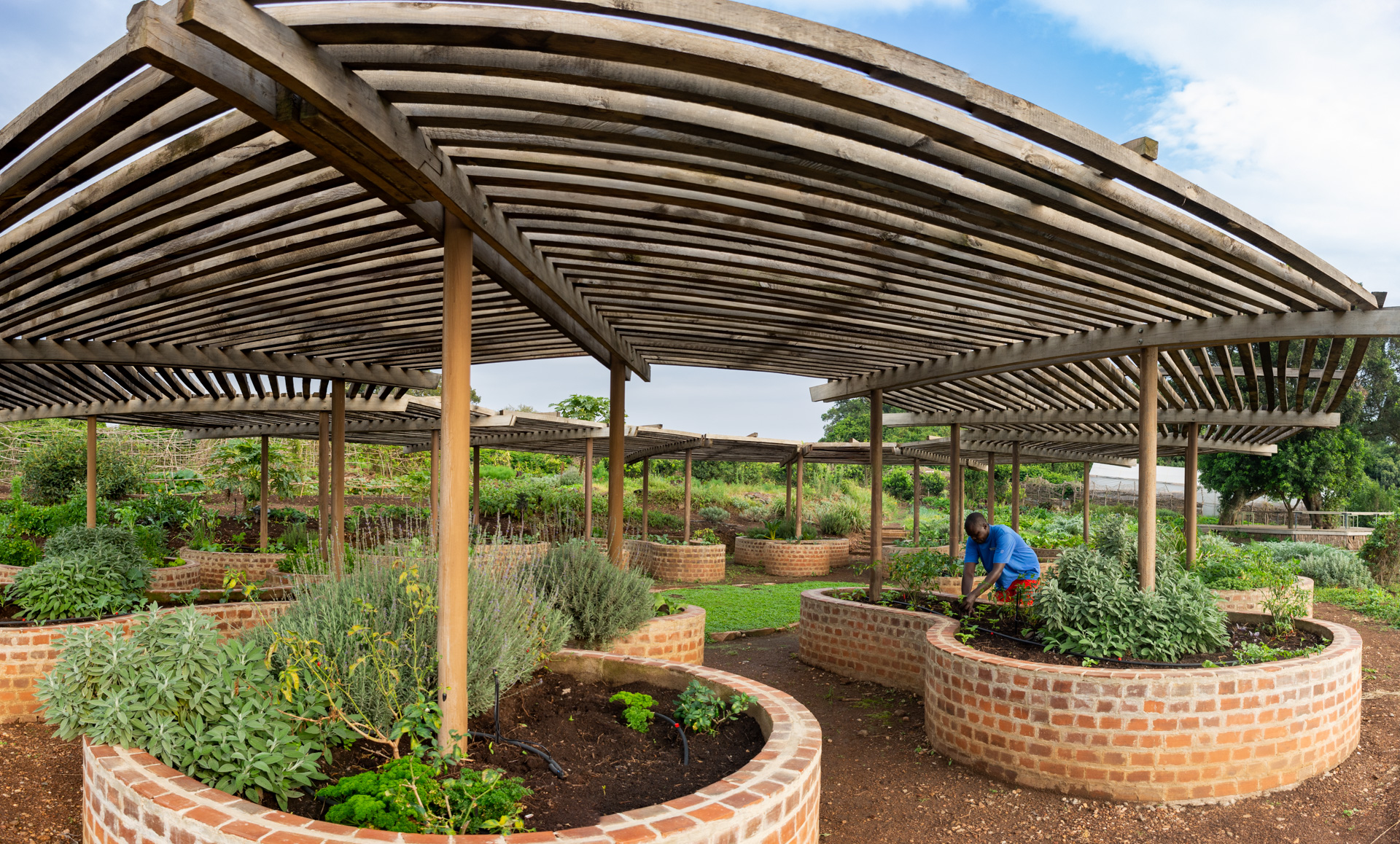From Seed to Plate
3 December 2019 | Inside Angama | Ian Dommisse

Supplying fresh vegetables for delicious food in the middle of the Maasai Mara is a particularly challenging task which Angama’s Shamba team have mastered. Not only do they have wild animals to worry about, but they need to propagate all their own seedlings – just “scooting down to the nursery” isn’t an option.

The journey of each delectable ingredient is carefully planned, delicately nurtured and usually begins around three months before appearing on a guest’s fork.
The story begins in the service zone of the Shamba – a functional passage bordering the left hand side of the garden. Considering over a hundred seed varieties have to be kept in stock, Cyrus arranged for an apothecary-inspired cabinet to be created and a dedicated room to be built. Team Shamba – James, Naliki, Ignatius and Samuel – selects the seeds of the day according to a sowing roster. Not too many at once, not too few, just the right amount to meet the kitchen’s needs.

Within the safety of the greenhouse, seeds are sown into trays of nutrient rich soil (read all about the Shamba’s soil enriching practices in Eating Earth) and stacked on raised shelves until the seedlings are sturdy enough to face the elements. Given that this step is pretty time consuming, the greenhouse was ergonomically designed. Five level platforms had to be cut into the sloping earth with access ramps running through the middle. In order to fit in as many planting surfaces as possible, carpenter George created two rows of raised shelves with enough space beneath to plant a third row at ground level.

Once seedlings have reached teenage-hood, they are transplanted into the Shamba to flourish along with their companions. I mean this in the literal sense – each plant has certain herbs, vegetables and flowers that optimise their growing conditions. Take tomatoes for example. They thrive when planted together with carrots, peas and spring onions (read more about the Shamba’s companion planting in Calabash O Clock).
Now the big question: which zone should host each particular crop? The Shamba team works hard to rotate the positions of produce to keep the nutrient levels of the soil abundant. In order to make it more interesting and delightful for our guests when visiting the Shamba, each ingredient is planted in two locations: one out in the ‘meadow’ areas and the other in the raised calabash beds. This means that the widest selection of produce can be found at a comfortable raised height for easy viewing and harvesting: the ‘shopping aisle’ of the Shamba.

Harvesting takes place daily. Chef Collins takes a stroll to the Shamba usually around midmorning with an ingredient list and a basket or two or three, depending on the day’s needs. Before departing with his freshly harvested vegetables, salads and herbs, everything is weighed in order to keep track of the garden’s supply.
Now in the expert hands of the chefs, the ingredients are transformed into delicious meals for our guests. After all, seed-to-plate freshness is hard to beat.



